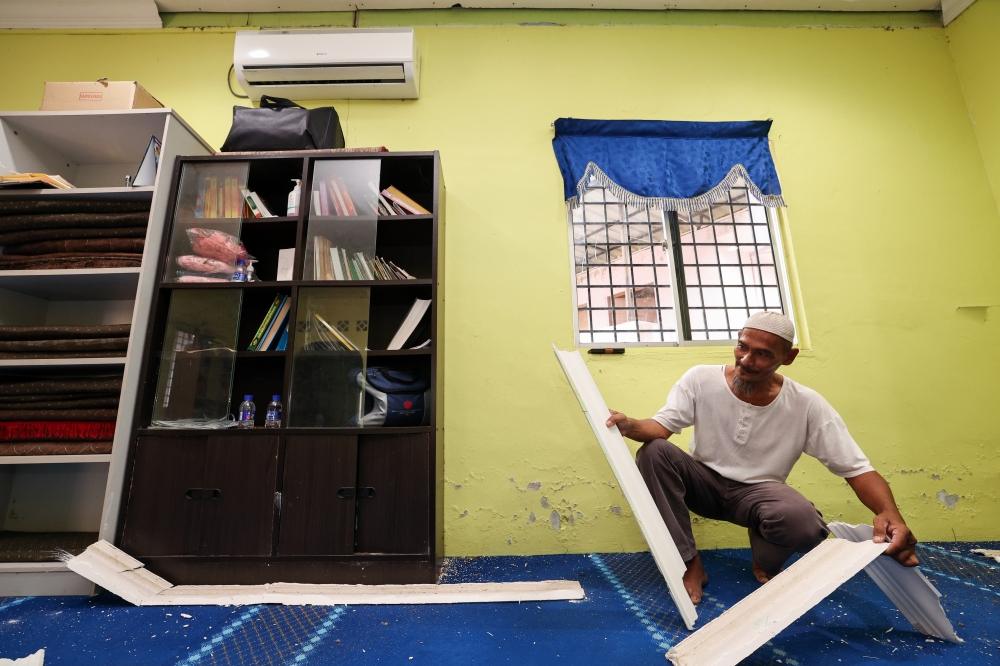AUGUST 29 — Over the past few days, Johor and her neighbouring states have been shaken by a few earthquakes. Understandably, people are concerned.
Earthquakes are an interesting natural phenomenon. Unfortunately, they are unpredictable and strong earthquakes can cause significant physical and massive economic damage. I won’t get into why earthquakes happen; but I believe there is a need to for Malaysians to better understand earthquake risks and types of damage.
There are two sides to an earthquake – the seismic event and the response to that event. The event and response are two very different fields of science.
The seismic event is when energy is released by the rupture of a fault in the tectonic plate. The science behind this is studied by seismologists. I understand there isn’t a lot of data available (compared to California, Japan, etc) to enable a robust understanding of seismic risk in Peninsular Malaysia as well as in Sabah and Sarawak. A key reason for the scarce data is earthquakes do not happen often here. Moreover, events are site specific, meaning the data collected in Bukit Tinggi won’t apply well to an unrelated fault such as in Ranau. Hence it is a challenge to understand the seismic risk arising from an “active” fault that is hardly active.

mam of Surau Kampung Sanglang, Saniman Abdul Samad, 63, looks at pieces of the ceiling that fell due to a weak tremor in Segamat on August 24, 2025. — Bernama pic
While seismologists may have to make guesses on seismic risk with scarce data, the good thing going for us is the earthquakes experienced in Malaya and North Borneo are not strong motion events. Meaning earthquakes here are not the Magnitude 7 or 9 (or close to 10) that has occurred in serious earthquake country. Hopefully they remain so and based on recorded history (or lack of it) going back to the days of the Sri Vijaya empire, it just might stay that way in the foreseeable future.
On the other side of the earthquake, response to the event can be segmented into structural or non-structural. The structural response pertains to engineering; whereas the non-structural are related to architecture, interior design or even skilled trade elements attached to or placed within the engineered structure.
Engineers have gone very far in understanding the structural (and geotechnical) response to earthquakes. We can now design buildings and bridges to resist very strong earthquakes. However, whether we design for such a strong earthquake depends on the seismic risk. For example, if the seismologist determines that a strong earthquake has a return period of 1 in 10,000 years, engineers will probably not worry too much about it because the chance of that happening is very low.
It is like a large asteroid strike on your house – it can happen but the likelihood of it happening is unfathomable (apparently 1 in 33 million chance for a small meteoroid). But will you pay to insure your house for it if the risk is extremely low? Thus the amount of earthquake protection you afford to buildings and bridges will depend on the seismic risk. Therein lies the importance of having a robust understanding of seismic risk in order to make a technically and economically sensible design decision.
Having said that, prior to the adoption of the Eurocode for structural design, the British Standard was the design guideline used in Malaysia. The British Standard for building structures allowed for a horizontal notional load, which seem to have been fit for purpose as I have not come across any reports building structural distress in Malaysia or Singapore due to seismic events over the past 30 years.
The non-structural response, however, is a different story. Most building “failures” you see in the news are non-structural failures. These are cabinets falling over, ceilings falling down, bookshelves toppling, roof/wall tiles falling off, glass windows shattering, plaster walls cracking or brick walls collapsing.
There are things we can do to reduce these non-structural damage like using stiffeners, tie-downs, tie-backs, etc. It is important to attend to potential non-structural failures as they often injure or kill people, more so than structural failures. The good news on non-structural failures is that the vibrations have to be relatively strong to cause the failure; and it seems that vibrations in Segamat were not that violent since “property” damage were not reported. In this respect, it is useful to also describe the earthquake with a Modified Mercalli intensity scale instead of just the magnitude (Richter or moment) so that people can relate to what was felt.
How do we move forward? Firstly, continue to to have seismologists (not engineers) work towards robustly understanding seismic risk. If that is not possible due to lack to data, then consider in the interim a technically as well as economically sensible seismic policy in structural design. Second, if one concerned about earthquakes, tie-down or tie-back at-risk existing non-structural elements in the home or office. Third, report tremors also on the Modified Mercalli to help Malaysians benchmark their experience and relate to, rather than fear, seismic risk.
* Kuenyi Ho used to design bridges in California, New Zealand and Taiwan to withstand strong motion earthquakes. He studied at the University of California, Berkeley, and was a registered professional civil engineer in the State of California.
** This is the personal opinion of the writer or publication and does not necessarily represent the views of Malay Mail.






